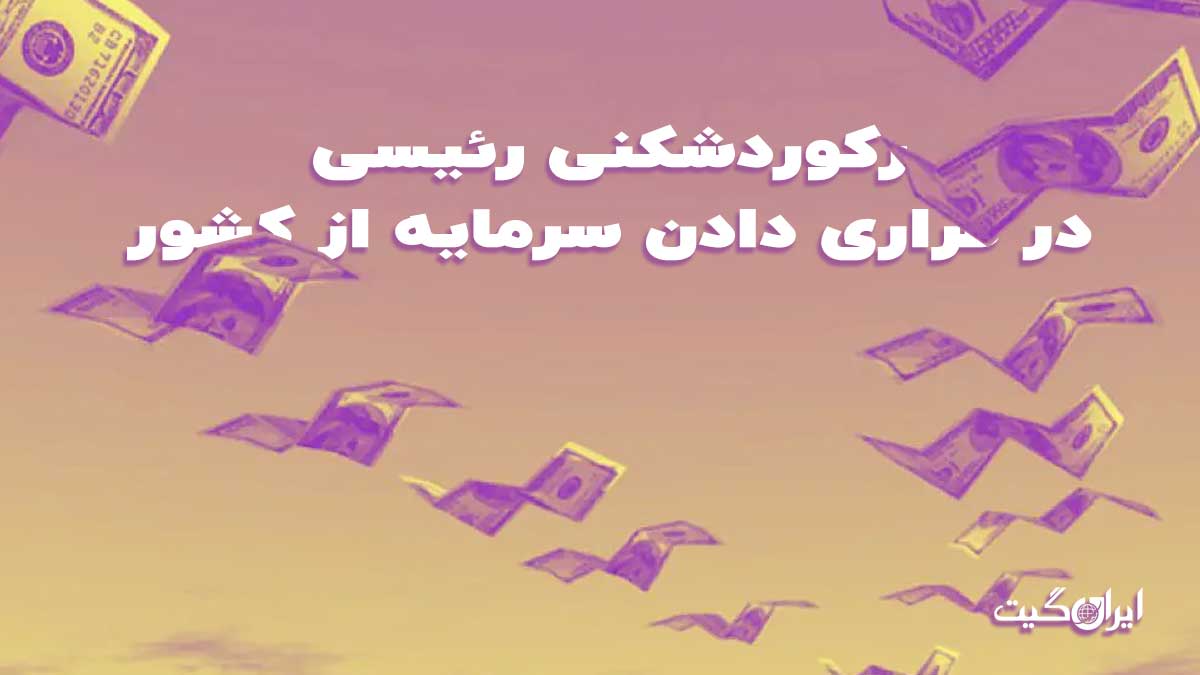Raisi’s Record in Driving Capital Out of the Country
Raisi’s Record in Driving Capital Out of the Country: According to Iran Gate, the Central Bank released statistics on the net capital account for the first half of the year last week, revealing a bitter reality in the country’s economic structure this year. According to this report, it can be said that Ebrahim Raisi’s government has broken the record for capital flight from the country, previously held by Mahmoud Ahmadinejad’s first government.
Last week’s report from the Central Bank highlights a worrying situation concerning one of the very important components in Iranian society. The report indicates that the record for about 20 years of capital flight from the country in the first half of 2022 has been broken by Seyed Ebrahim Raisi’s government. According to this report, the net capital account in the first half of the current year has surpassed negative 12 billion and 850 million dollars.
This figure, previously repeated during the ninth government, indicates the disastrous performance of the government in providing investment security, which if not available anywhere on the planet, convinces investors to flee.
According to the Central Bank’s capital account report, this metric was about negative 10 billion dollars in the first quarter of 2022. However, due to the failure of the JCPOA negotiations and the government’s strange and totalitarian policies in economic and social areas, this figure exceeded negative 12 billion and 850 million dollars by the end of September.
What is the Capital Account Report?
In macroeconomic terminology, the capital account is recognized as one of the components of the balance of payments, including all transactions that cause a change in ownership of assets or foreign liabilities. In other words, when a country’s capital account is negative, the trend of capital movement in that country is outward.
In simpler terms, when this figure, as observed in Iran, is negative, investors and financial market traders are much more inclined to invest or trade abroad. Therefore, this economic metric is considered a factor for assessing the level of capital inflow and outflow from countries.
However, it should be noted that merely turning this metric positive cannot mean that the economic mechanism of a country is productive and constructive, as internal market speculation and brokerage may be more vibrant for various reasons than investment in neighboring foreign countries, which is usually the first choice of the middle class.
For example, currently, with Turkey’s economy facing a serious crisis, the inclination of both small and large Iranian investors to enter this country’s markets has decreased. It should be noted that despite the reduction in such motivation, we are witnessing Raisi’s government’s record in driving capital out of the country. In other words, if Turkey’s situation as the first destination for Iranian investors in the economy and collective livelihood was like the years 2010 to 2020, today we would be witnessing much larger and more astronomical figures than those announced by the Central Bank.
The Golden Era of Khatami and the Blunders of Raisi and Ahmadinejad
By looking at the history of capital account reports in Iran, it is clear that only in the three years of 2002, 2003, and 2004 was this figure positive in Iran. In fact, it can be said that in the years following the Islamic Revolution, the Iranian economy only in these three years saw more capital inflow than outflow. However, before and after these three years, the country has always faced capital outflow, which has fluctuated in intensity.
According to experts, the positive trend of capital inflow into the country at the beginning of the 2000s was the natural and logical result of adopting policies of global interaction implemented by Mohammad Khatami’s government. This policy opened the doors of international trade to Iran and brought the country out of economic isolation. However, with Mahmoud Ahmadinejad taking office in 2005, the situation reversed, and since then, the rate of capital formation in the country has always been negative.
Although after the JCPOA agreement in 2015, these reports were significantly positive, the two-year period of implementing the JCPOA could not rescue this important economic metric from below zero, and the rate of capital formation in Iran has remained negative to this day. However, the masterpiece left by Ebrahim Raisi’s government in this regard is achieving a negative record of 12 billion and 850 million dollars, unprecedented in the last 20 years. Considering that in the second half of the year, the capital account usually worsens, there is a possibility of this figure increasing by the end of the year.
In the special Iran Gate report, an article titled ‘A New Currency Crisis is on the Way’ has been published, which is recommended for reading if interested.

